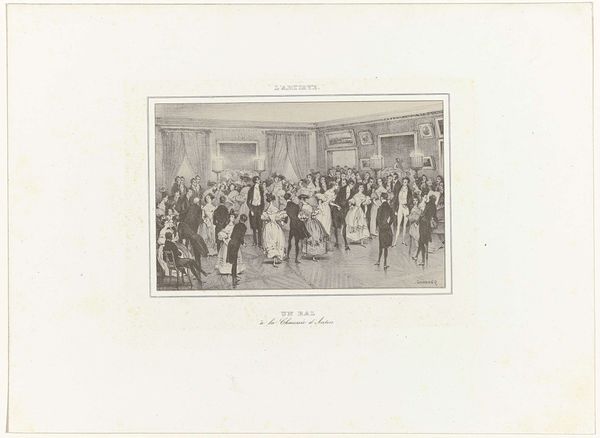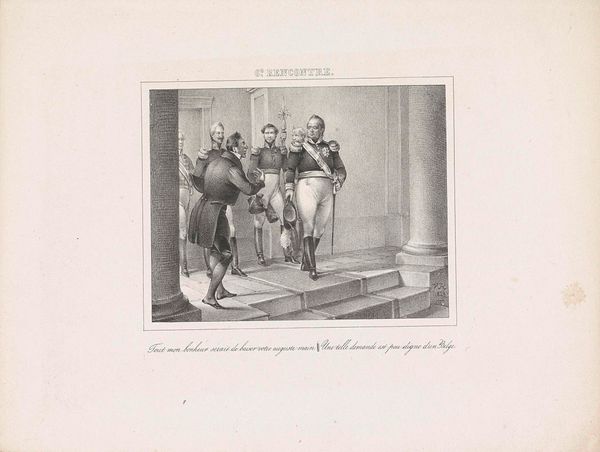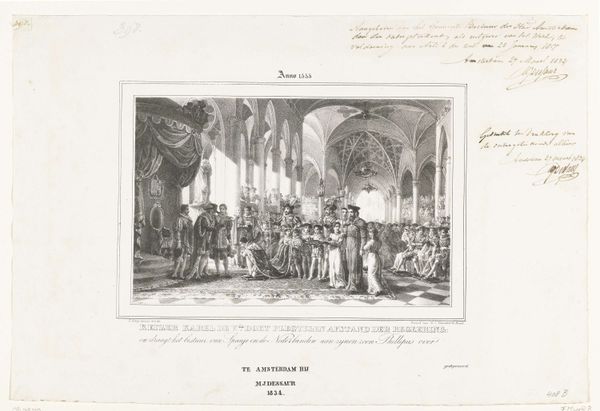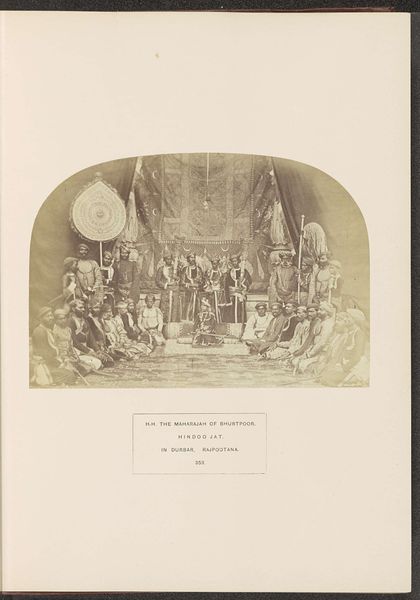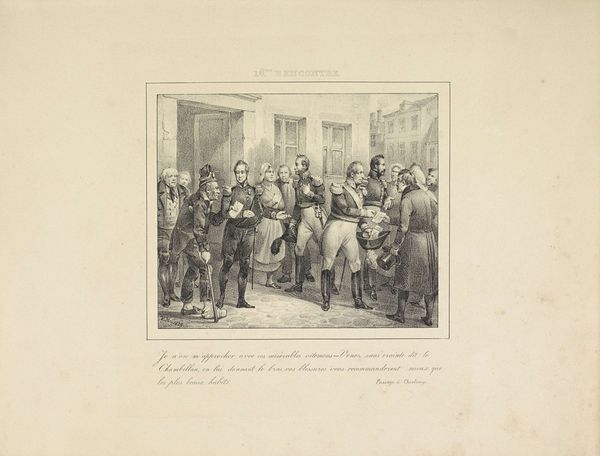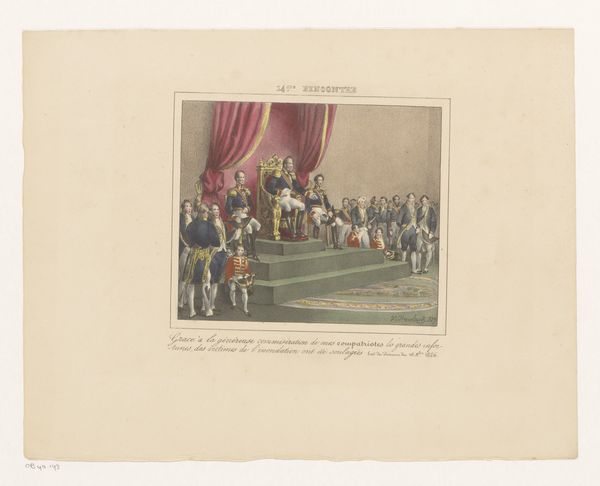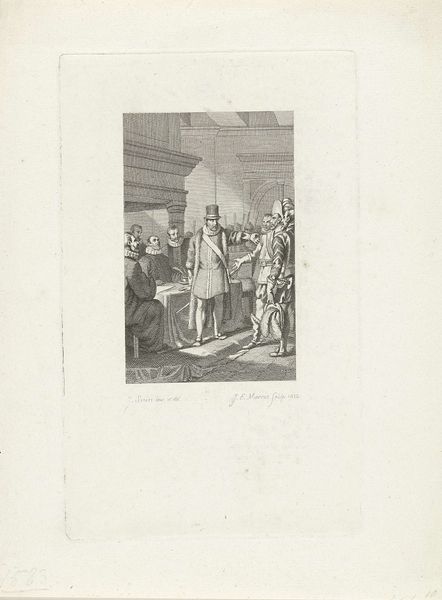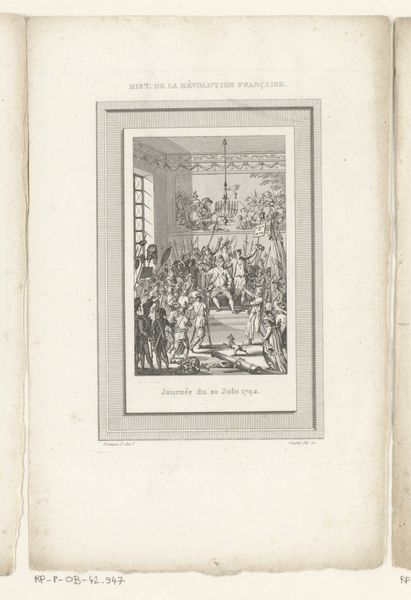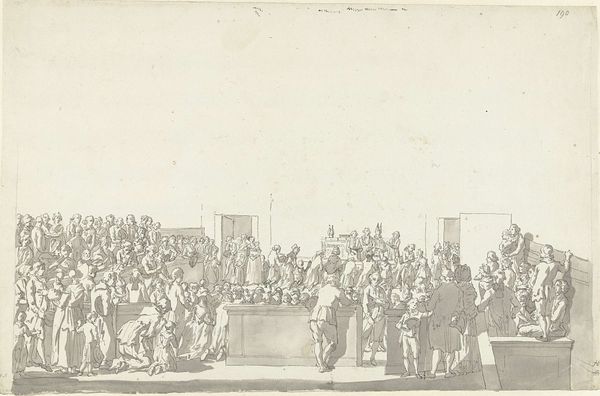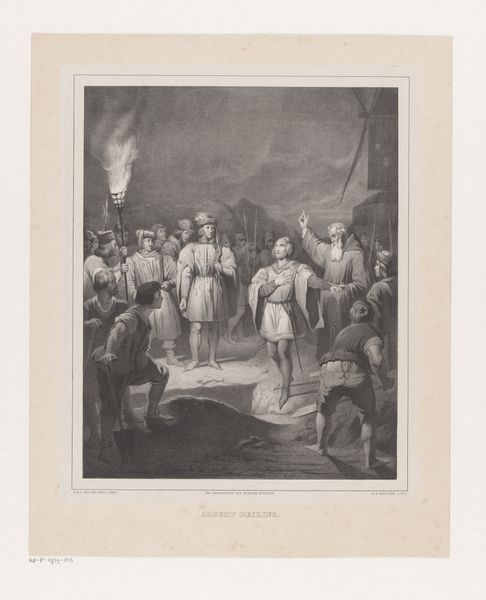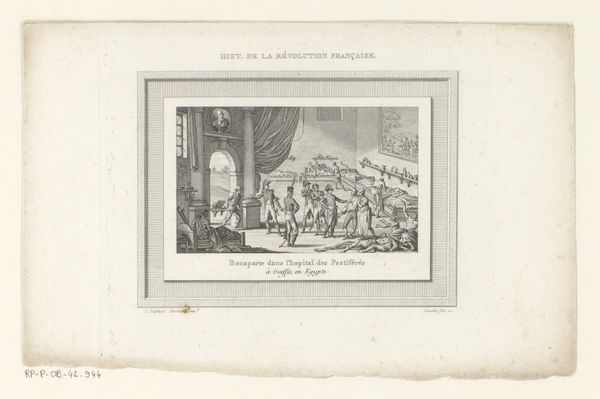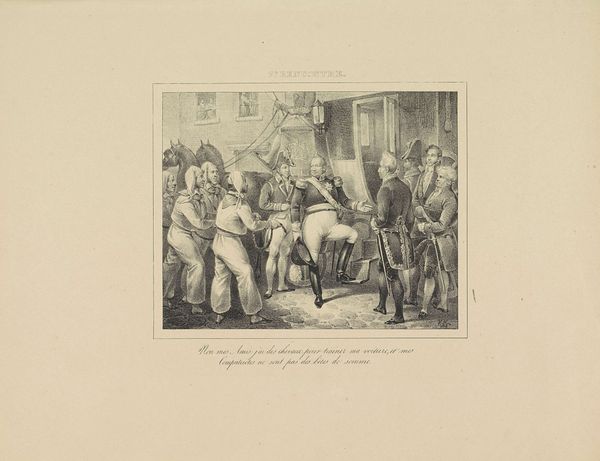
Koning Willem I geeft dank voor de hulp verleend aan de slachtoffers van de watersnood van 1826, 1829 1829
0:00
0:00
print, engraving
#
portrait
# print
#
old engraving style
#
group-portraits
#
romanticism
#
history-painting
#
engraving
Dimensions: height 235 mm, width 305 mm
Copyright: Rijks Museum: Open Domain
Curator: Today, we're examining "Koning Willem I geeft dank voor de hulp verleend aan de slachtoffers van de watersnood van 1826," an engraving from 1829 by Jean-Louis Van Hemelryck. Editor: The composition feels strikingly staged, almost theatrical. There is a definite emphasis on verticality through the throne. Curator: Absolutely. Consider how the engraving technique uses distinct hatching and cross-hatching to model form and convey the textures of cloth, skin, and even the weight of the regal attire. It's an impressive feat of control. The hierarchy created via the height of the king also alludes to concepts of divine rule. Editor: I’m struck by the visual symbolism surrounding King Willem I. He’s presented elevated on a throne, in military garb, conveying power. However, there is a softening gesture—an apparent moment of gratitude toward the populace behind him. One can imagine this ruler cares for their people through the visual symbol of charitable distribution, especially considering the piece's inscription which references generosity and the alleviation of distress. Curator: Yes, notice how Van Hemelryck uses the contrast between the darkness and light to literally elevate Willem, casting him in a favorable spotlight while literally darkening the scene around the people. There is great control and skill used in service of idealization here. Editor: The figure is absolutely idealized. He sits high above his countrymen in a kind of pantheon of benevolence, recalling older symbols of statecraft such as that of a royal benefactor or an allegory of charity. Yet the composition almost looks anxious and unnatural given that one may wonder what events actually occurred during this 'moment'. Curator: That tension is exactly what the Romantics were after, trying to instill a sense of heightened feeling and drama, despite being grounded in documented historical happenings. Editor: This reading changes my perspective. Thinking about visual texture and symbolic associations simultaneously shows the capacity for potent cultural encoding via formal elements. Curator: Indeed, and by attending to both the composition and symbolic elements, we reveal its complexities as both art and cultural artifact.
Comments
No comments
Be the first to comment and join the conversation on the ultimate creative platform.
